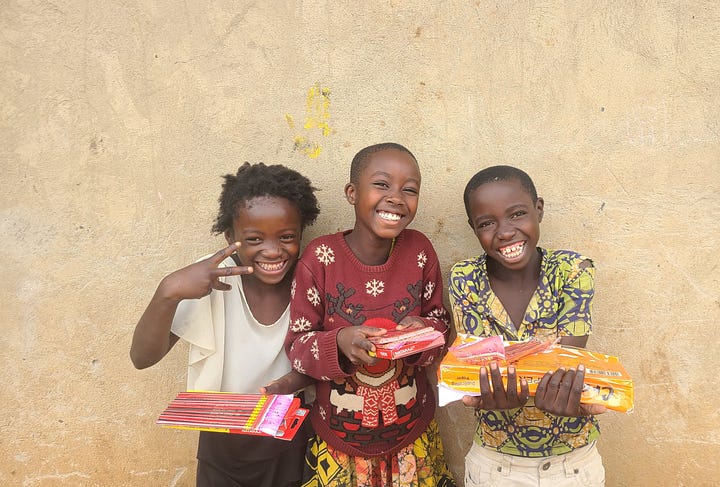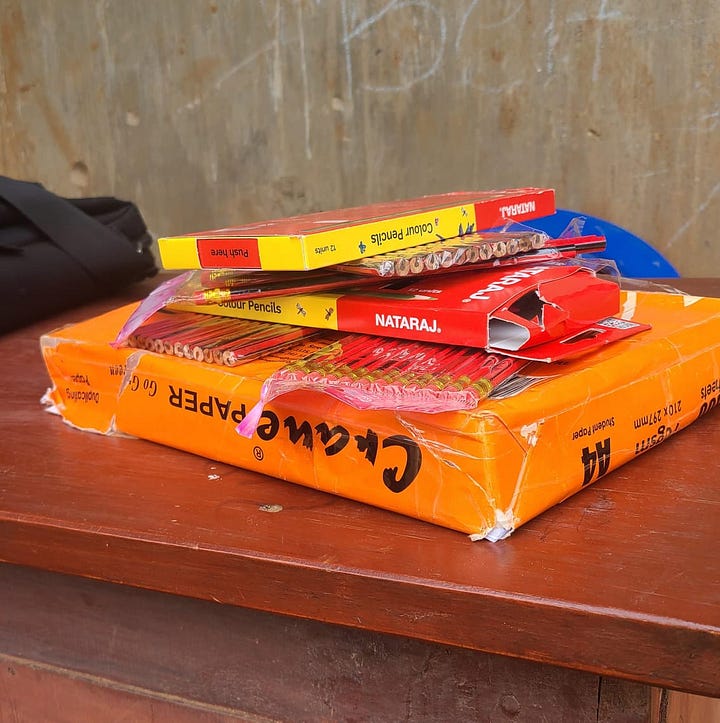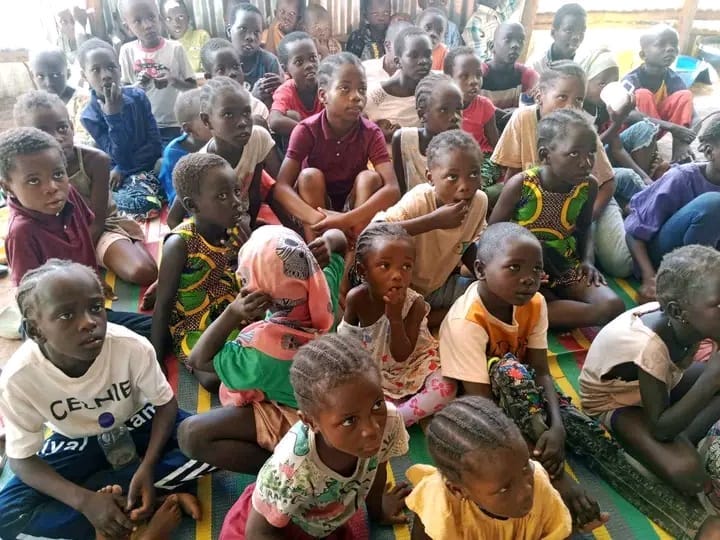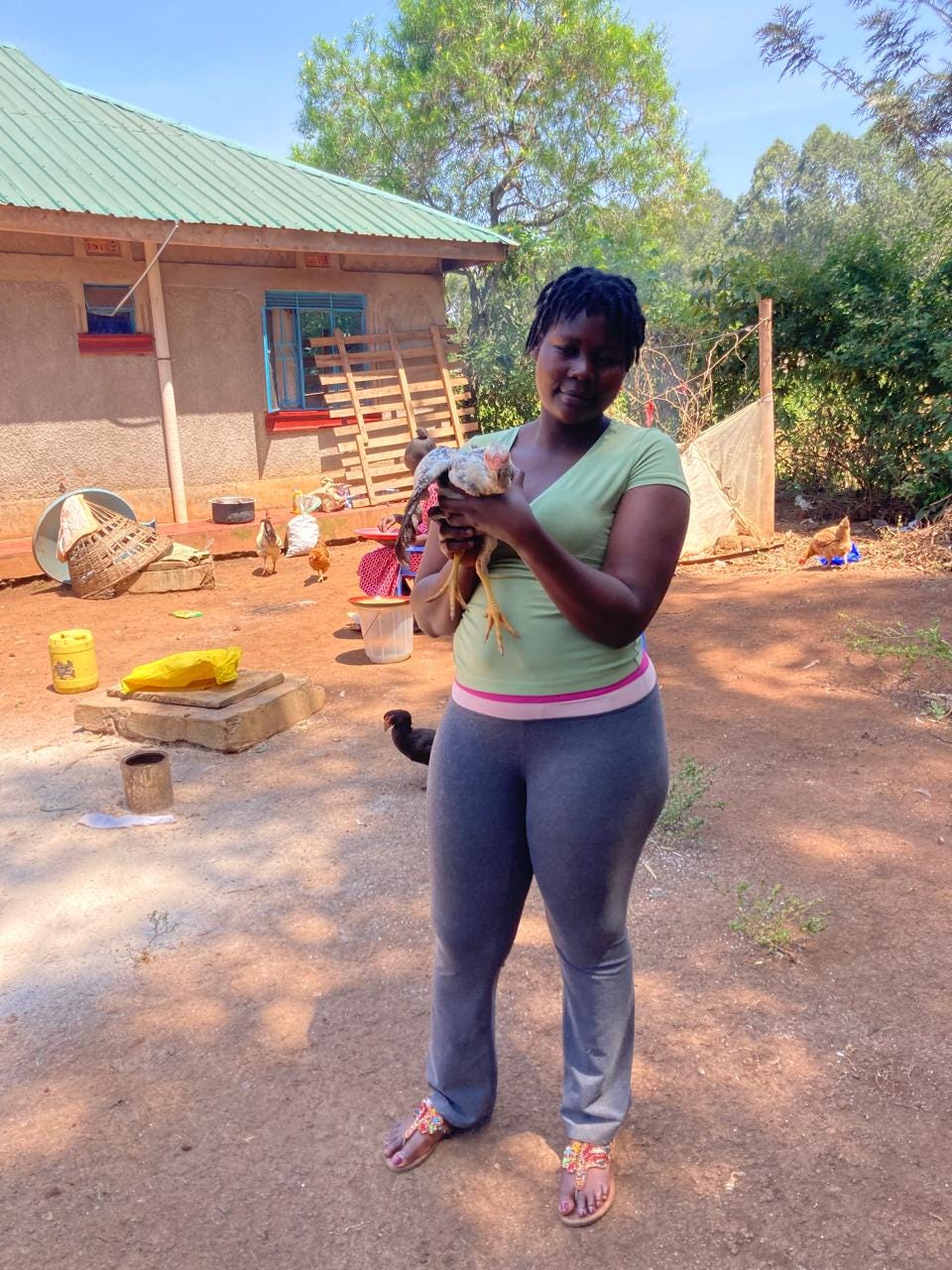ChangeMakers Choose Children
Make It Rain For Change $10 Challenge Part 2: African ChangeMakers transform their Hamiltons into educational opportunities for the most vulnerable: children!
Note: Due to the length of this email, content may be cut off. Best to read on the Substack app!
Welcome to Part 2 in the “Make It Rain For Change” series where we learn how far $10 goes to transforming lives in Africa. In November, I distributed the $350 in the RainMaker Fund (raised from paid subscribers and donors) equally amongst the 35 African activists I interviewed this summer.
The ChangeMaker Challenge: What meaningful impact can you deliver to others with just $10?
In Part 1, Bountiful Trees & Chess Accessories, we learned that 5 ChangeMakers transformed $50 into:
61 tree saplings benefiting a school, a permaculture farm, and a homestead caretaker in Kenya
a chess clock to level up the learning for 30 children in a chess club in Kibera Slums, Kenya
a chess table and bench to support youth learning chess in rural Malawi
In this edition, Part 2, we find the following ChangeMakers prioritizing the educational needs of the most vulnerable in their communities: children.
Supporting the Social Emotional Health of Refugee Children in Kakuma Camp, Kenya
Australian educator and ChangeMaker Elsa Lilienfield and her counterpart Matendo Nzika in Kakuma Refugee Camp in Kenya are the duo behind Dolls & Lions. Elsa instigated the Dolls & Lions Project in October 2020 after discovering the lack of suitable toys to stock a childcare room in Kakuma Refugee Camp for the children of trainees in the needlework and English courses at the training centre.
Elsa explained that “apart from the basic and immediate therapeutic benefits of cuddling a soft toy, the long-term impact of imaginative play includes building empathy, which improves social skills such as conflict resolution and parenting later in life. There is also the therapeutic and financial benefit to the toymakers to consider.”
On October 2nd, the Dolls & Lions project handed out their 1,000 doll during a special celebration at the refugee-led Bidii Yetu organization in Kakuma Refugee Camp.


Elsa reported that $10 will provide one additional doll per child at the next quarterly distribution.
We'll add one doll to our monthly quota. With extras, like the handout costs, transport for the team and so forth, it takes AU$15 per toy. So even getting $10 will help… just to know someone else cares. Thank you! - Elsa Lilienfeld
Learning Essentials: Pencils and Paper
In my world, paper, pencils, and notebooks are ubiquitous. Easy to come by and affordable. But, in places like Nakivale Refugee Settlement in Uganda and Kakuma Refugee Camp in Kenya - both isolated enclaves run in partnership with UNHCR and serving hundreds of thousands of refugees from war-torn and climate change-impacted East African countries - these basic educational supplies and tools are beyond the reach of most.
Two of our ChangeMakers chose to put children’s needs first buy purchasing supplies for learning and art.
New Talent for Best Future in Nakivale Refugee Settlement, Uganda
Muhindo Mutundi, founder of
, transformed $10 into paper and pencils to support creative expression for young children, many of whom are orphans, do not know English, and are not attending school. NTBF currently supports 150 children.At New Talent for the Best Future, we believe that art is more than just drawing or sketching. For vulnerable refugee children and youth it is a powerful way to bring their imaginations to life. Our art lessons give them a safe space to express themselves, beyond the struggles they are current facing.
Art helps these children and youth to dream and map out their futures. It’s a way for them to see past their current hardships and envision a better tomorrow. By elevating their creativity, we are helping them to build the confidence and hope they need to reach their potential and dreams. - Muhindo Mutundi


Social Action Center for Vulnerable Individuals (SACVI), Kakuma Camp, Kenya
Andrew Lutula, a Congolese refugee living in Kakuma Refugee Camp (Kenya) and an educator by profession, prioritized the children served by SACVI. that he and his fellow volunteers serve. He reported that he was able to purchase essential educational supplies for the children his organization supports. With most schools in Kakuma Camp cramped and overcrowded, learning during the day is a challenge. Parents came together to teach their children together in the afternoons and evenings after school to ensure that their children develop key literacy skills.
With the $10, we focused on providing essential educational supplies for the children. These supplies—such as notebooks, pens, and pencils—were given to children who did not have access to these basic tools for learning. By ensuring they had the proper materials, we helped to empower them to continue their education and overcome barriers to learning.
We documented this activity with photos and stories, and we are excited to share how this small but impactful gesture has made a difference. Your $10 has helped equip children with the tools they need for a better future, and we are grateful for your support.
Thank you again for your generosity and trust. - Andre Lutula


Chickens For Change!
Our ChangeMaker, Happy Mthulula in Malawi, decided to gift her $10 to Ruth Akinyi Ochieng of Wasichana Tunawesa [translated from Swahili to English means “Girls We Can”], who is working hard to support the education of young girls in Kenya.
recently wrote here on Substack about how her own experience as a teenage mother and her struggles with education motivated her to find a way to help young girls achieve their educational dreams.I thought it wise to start raising hens using permaculture skills and the chicken project started scaling up and I started having good sales, and I decided to get back to school. This paid for my school fees until I did my final exams.
Based on my experience, I decided to start helping young mothers who have had teenage pregnancy and were forced to drop out of school and had no hope of ever getting back. - Ruth Akinyi Ochieng
Ruth used her $10 to purchase two hens and sent this report:
About each chicken costs $5, so $10 will give us two hens. We feed this hens, they hatch more chicks which scales up our project. 1 chicken can give us 15 chicks in one cohort and the cycle continues. We get eggs as well that we sell from this one chicken. So 1 chicken can take 4 girls to school because once the chicks grows we sell some for their school fees. We sell each at $9 or $12 dollars depending on their weight and whether it's a rooster (which fetches a higher price). So 3 hens that are well developed pays 1 girl’s school fee of $35 per semester. We sell 12 out of 15 chicks that were hatched and leave the rest to scale up the project by laying and hatching more chicks for the sustainability of the project and paying the girls' fees for the rest of the semesters. - Ruth Akinyi Ochieng

Fighting Preventable Diseases by Making Liquid Soap
Calvin Juma of Future Within CBO in Kibera Slums, Kenya used his $10 donation to purchase supplies to make 20 litres of liquid soap. From my interview with Calvin this summer, he explained to me how critical it was to teach hygiene to children and make soap available.
In Kibera Slums, most sewage runs downhill in open ditches, resulting in stagnation, breeding insects and environmental pollution. The unsanitary condition becomes a breeding ground for water and airborne diseases such as typhoid and cholera.
Children bear the brunt of the conditions of poverty, explained Calvin. “As the most vulnerable, thousands of children live through no fault of their own in extreme poverty without access to sanitation, electricity, medication, clean water, electricity and adequate education… which are the basic rights of any child.”
"We managed to use the funds to purchase ingredients for making liquid soap and made 20 litres of liquid soap that we later distributed to the kids to help fight preventable diseases through hand washing programs. We realized that this not only helps them to gain soap making skills but also helps in improving their overall health, hygiene and educational performance. Thanks so much for making all this to be possible." - Calvin Juma


Thank you for reading. I’ll be back soon with Part 3 of “Make It Rain For Change” stories!
Consider upgrading your subscription so that we can rebuild the RainMaker Fund!
If you’re not interested in upgrading but wish to make a one-time contribution, the button below will take you to the “Buy Me A Coffee” page that I set up specifically for one-time RainMaker Fund donations.








